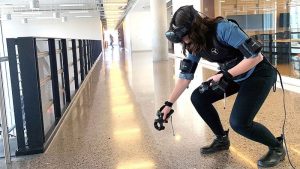Western New England University (WNEU) has opened a new extended reality (XR) lab, which provides students and faculty with access to the latest in virtual (VR), augmented (AR), and mixed reality (MR) technologies.
Researchers at the University of Georgia (UGA) have found that virtual reality (VR) technology may help multilingual students better retain information.
A public high school in Maine is using virtual reality (VR) to enhance cultural learning in foreign language courses.
The St. Vrain Valley School District in Longmont, Colo., has become the first school district to adopt Avantis Education’s virtual reality (VR) and augmented reality (AR) content platform districtwide.
Texas’ San Isidro Independent School District is using funding from the Federal Gaining Early Awareness and Readiness for Undergraduate Programs (GEAR UP) grant program to bring virtual reality technology into its middle and high school classrooms.
The Dallas Symphony Orchestra (DSO) will use cutting-edge technology to engage students in STEAM-based music education learning activities.
The University of Hawaii (UH) at Mānoa has expanded access to its virtual reality public speaking lab. The lab, managed by the Center for Communicating Scientific Information in the Communicology Program, uses technology that allows the user to practice speeches and receive immediate feedback.
The Pennsylvania Department of Corrections (DoC) is piloting new virtual reality (VR) technology to help “promote healthy relationships and engagement between incarcerated parents and their children.”
Arizona State University (ASU) is turning to augmented reality (AR) and virtual reality (VR) technologies to teach the next generation of construction industry professionals.
Two Kennesaw State University (KSU) professors have launched a program to teach K-12 students cybersecurity basics through virtual reality video games.






